Abstract
Survey data were obtained from a random sample of 657 homeowners in New Jersey and also from 141 homeowners who had already monitored their homes for radon. People who had not tested tended to believe that they were less at risk than their neighbors, and they interpreted ambiguous predictors of home radon levels in ways that supported their beliefs of below-average risk. Residents who had already tested their homes were relatively accurate about the probability of health effects. In both groups less than half of those who knew that radon can cause lung cancer were willing to admit that it would be serious if they suffered health effects from this source. The optimistic biases of the public may hamper attempts to encourage home radon monitoring and to promote appropriate mitigation measures in homes with elevated radon concentrations.
Full text
PDF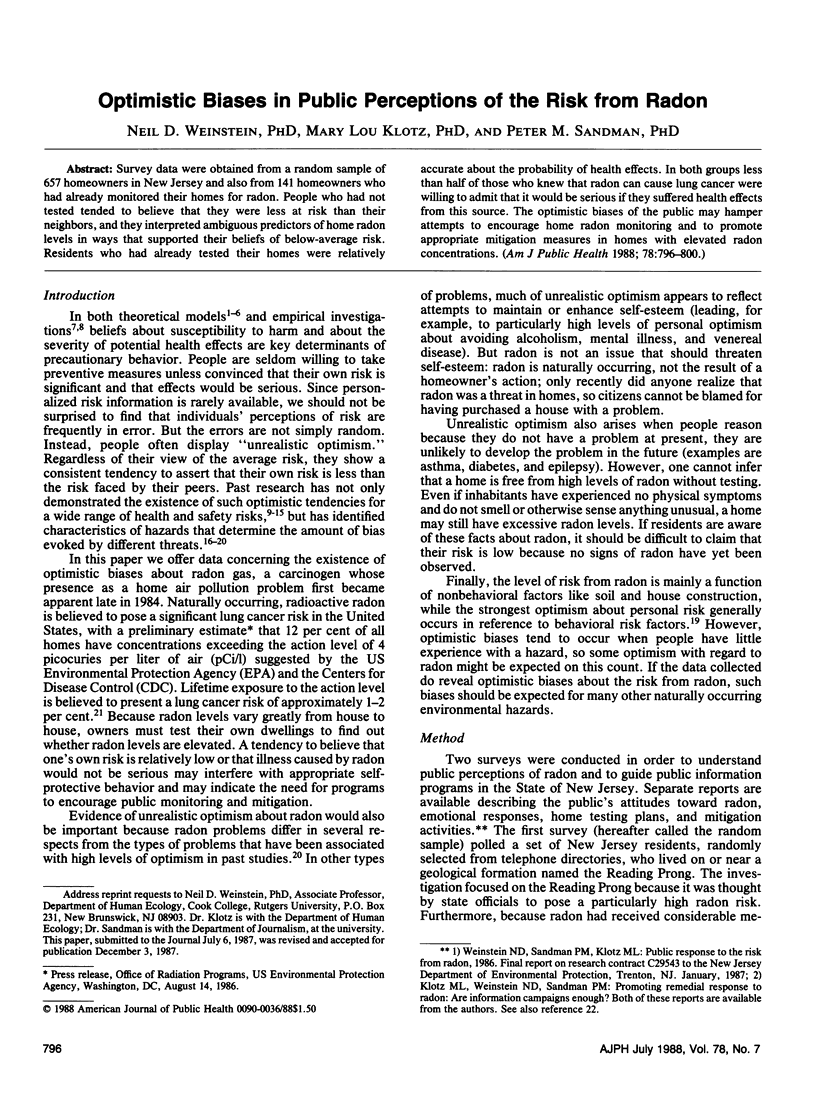
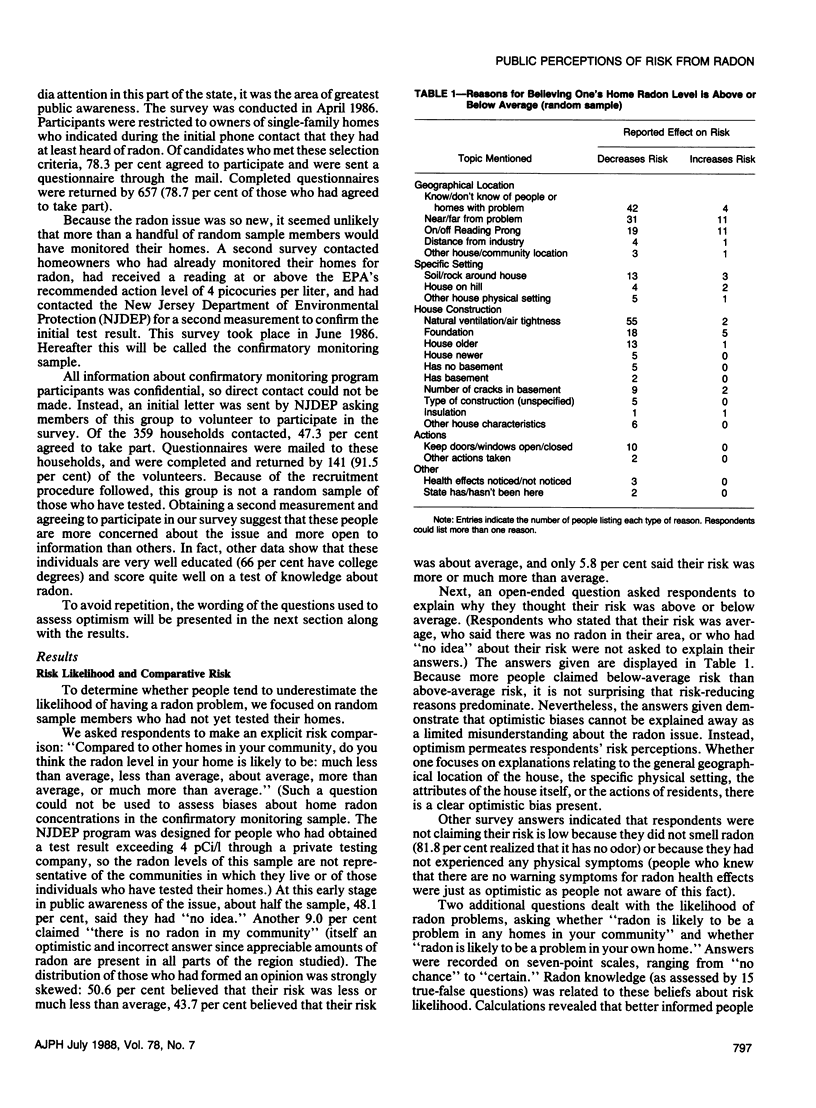
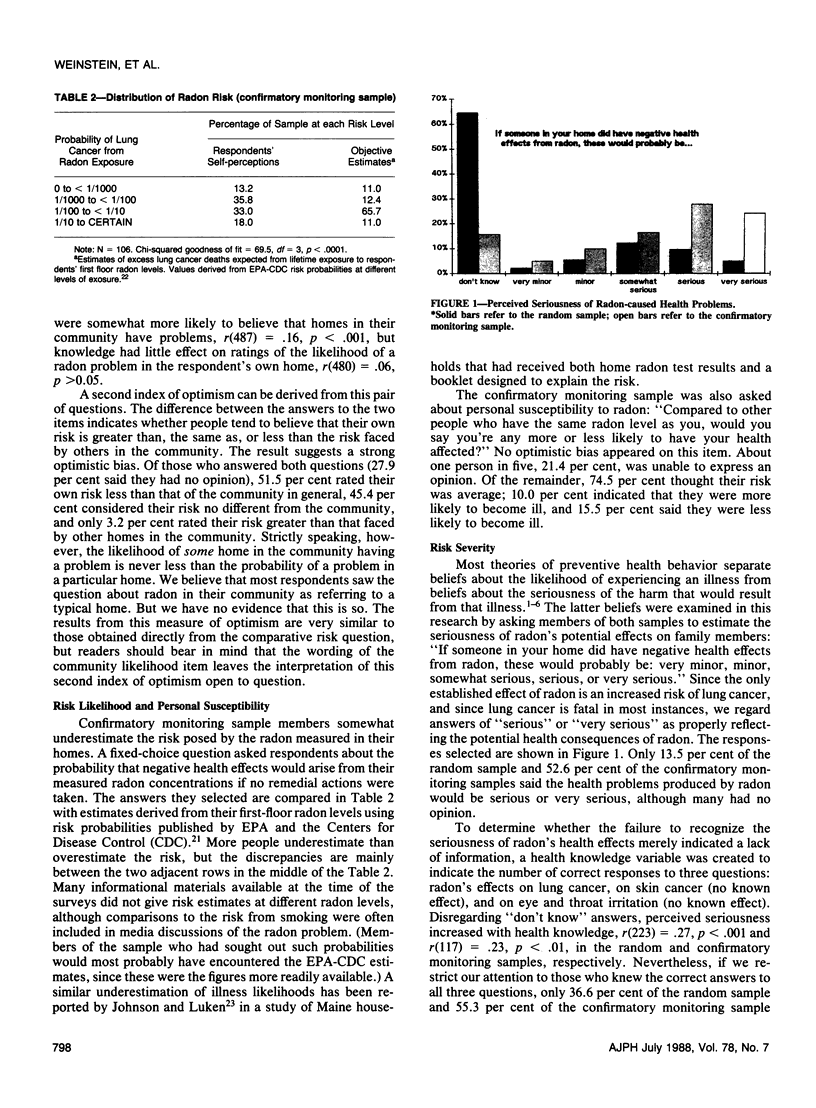
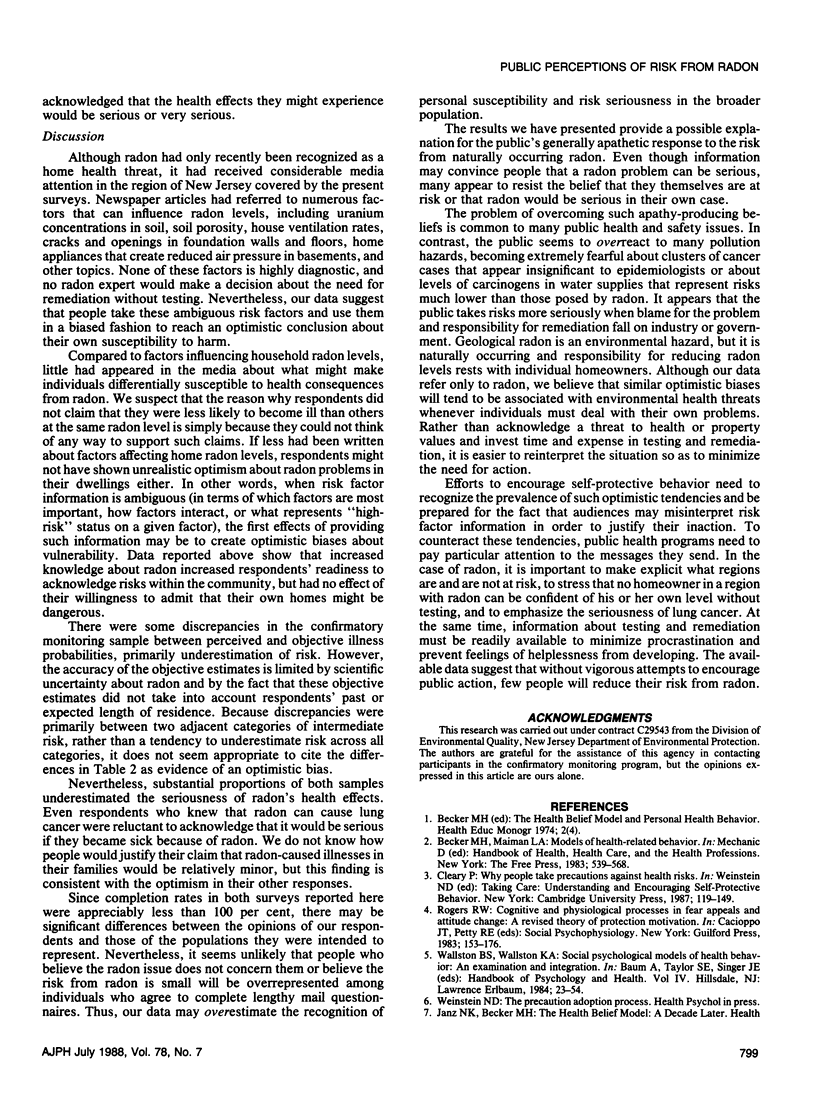
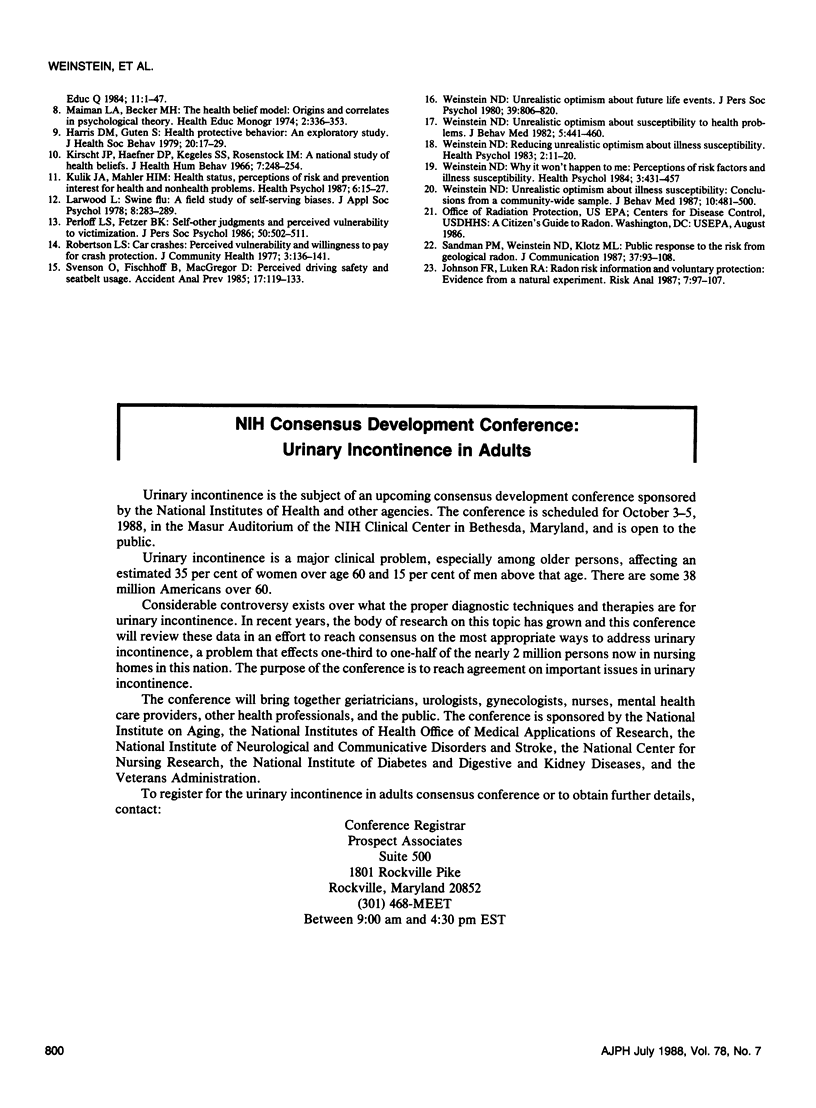
Images in this article
Selected References
These references are in PubMed. This may not be the complete list of references from this article.
- Harris D. M., Guten S. Health-protective behavior: an exploratory study. J Health Soc Behav. 1979 Mar;20(1):17–29. [PubMed] [Google Scholar]
- Johnson F. R., Luken R. A. Radon risk information and voluntary protection: evidence from a natural experiment. Risk Anal. 1987 Mar;7(1):97–107. doi: 10.1111/j.1539-6924.1987.tb00973.x. [DOI] [PubMed] [Google Scholar]
- Kirscht J. P., Haefner D. P., Kegeles S. S., Rosenstock I. M. A national study of health beliefs. J Health Hum Behav. 1966 winter;7(4):248–254. [PubMed] [Google Scholar]
- Kulik J. A., Mahler H. I. Health status, perceptions of risk, and prevention interest for health and nonhealth problems. Health Psychol. 1987;6(1):15–27. doi: 10.1037//0278-6133.6.1.15. [DOI] [PubMed] [Google Scholar]
- Robertson L. S. Car crashes: perceived vulnerability and willingness to pay for crash protection. J Community Health. 1977 Winter;3(2):136–141. doi: 10.1007/BF01674235. [DOI] [PubMed] [Google Scholar]
- Svenson O., Fischhoff B., MacGregor D. Perceived driving safety and seatbelt usage. Accid Anal Prev. 1985 Apr;17(2):119–133. doi: 10.1016/0001-4575(85)90015-6. [DOI] [PubMed] [Google Scholar]
- Weinstein N. D. Unrealistic optimism about susceptibility to health problems. J Behav Med. 1982 Dec;5(4):441–460. doi: 10.1007/BF00845372. [DOI] [PubMed] [Google Scholar]
- Weinstein N. D. Unrealistic optimism about susceptibility to health problems: conclusions from a community-wide sample. J Behav Med. 1987 Oct;10(5):481–500. doi: 10.1007/BF00846146. [DOI] [PubMed] [Google Scholar]
- Weinstein N. D. Why it won't happen to me: perceptions of risk factors and susceptibility. Health Psychol. 1984;3(5):431–457. doi: 10.1037//0278-6133.3.5.431. [DOI] [PubMed] [Google Scholar]



